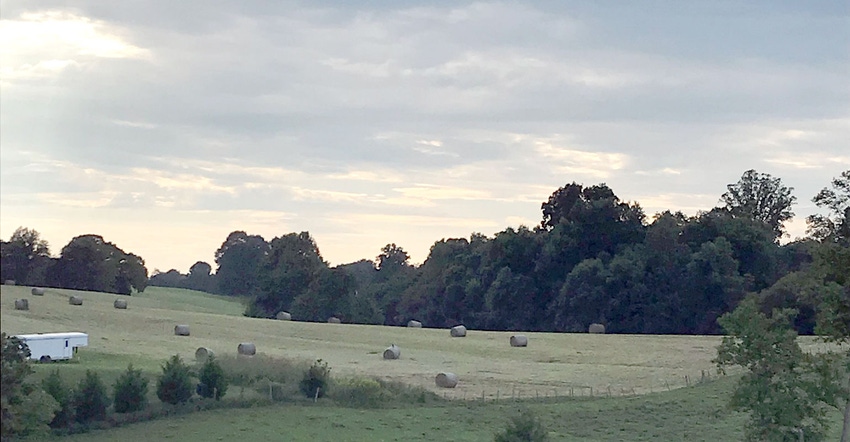September 14, 2018

Our country’s rural lands are disappearing. The United States loses 175 acres of farm and ranch lands every hour to development[1], and once those lands are lost, they're gone.
This loss threatens the families, communities and businesses that rely on these lands. That makes it more important than ever to partner with private land owners – farmers, ranchers, foresters and others – to protect the lands and waters that enhance our health, resilience and economy.
Giving them tools they need to conserve and even improve, not only their land but their way of life, should be a top priority—and it should be done in the new farm bill under consideration in Congress before its expiration at the end of this month.
Simply put, the farm bill is the most important legislation for conserving private lands in the United States. Voluntary conservation programs in the bill promote healthier soil, cleaner water, enhanced wildlife habitat, increased flood control, and lowered risk of damage from natural disasters.
Land stewardship practices supported by the farm bill preserve the livelihood of U.S. farmers and ranchers by encouraging the best practices for getting economic benefit from privately-held agriculture lands.
One way this works is through conservation easements that help keep farms and ranches in private hands while protecting natural resources that benefit us all for generations to come.
In Texas, where 95 percent of the lands is privately owned, easements protect land from development like the 650 acres of the Albritton Ranch in the Bandera Canyonlands and 9,992 acres at the Pietila Ranch in Culberson County.
Easements also expand wildlife habitat and opportunity for outdoor activities like hunting and fishing. Wetland easements in Arkansas, for example, have helped the state become home to the largest wintering population of mallard ducks in North America. These easements also provide landowners an alternative to farming on flood prone lands or less productive farmlands.
Even beyond protecting land, businesses and conservationists agree that that these policies are a critical tool for improving land health.
Soil Health
The key to safeguarding both the environment and the vitality of the American producer is literally under our feet: the health of our soil. Healthy soil is a cornerstone of ecosystem biodiversity, and it effectively filters and stores water. Land management practices that generate healthy soil mitigate the effects of changing weather patterns by taking excess carbon out of the air and reinserting it into the land where it can be fully utilized by agricultural crops.
According to research by Nature Conservancy scientists, environmental economists, and agriculture experts, the adoption of soil health management systems for U.S. corn, soy, and wheat croplands could deliver nearly $50 billion annually in social and environmental benefit.
Equally as important, healthy soil delivers direct economic benefits for farmers by increasing yields and land productivity while reducing inputs, resulting in fewer costs of water, energy, and chemicals. Healthy soil is also important for lowering risks from pests and exposure to drought and flooding.
Finally, the farm bill should not just promote the health and sustainability of fields, but also the edges—forests, wetlands, and more. Congress should ensure that the 2018 farm bill encourages practices like restoring wetlands and planting buffer zones of vegetation. These practices reduce erosion, keep valuable nutrients on land and reduce the runoff of nitrogen, phosphorus and other agriculture-related chemicals into waterways.
The health and well-being of our lands is critical for American businesses like Wrangler, which uses U.S.-grown cotton for more than half of the cotton in its products. Collaborative efforts for responsible stewardship of natural resources are not only the right thing to do, but they also make good business sense.
Unfortunately, funding for conservation programs under the farm bill have already been cut by billions of dollars—and easements are down to nearly one-third of the 2014 funded amount. Further cuts will gravely compromise the ability of these programs to achieve their multiple economic, environmental, and quality of life benefits.
To support the communities, businesses, and economies that depend on these lands, Congress must pass a farm bill that not only protects our lands but helps them remain productive for years to come.
We are proud of the work we do to support agricultural communities and ask Congress to approve a farm bill that does the same.
[1] https://www.farmland.org/our-work/areas-of-focus/farmland
Glenn Prickett is the co-chief external affairs officer of The Nature Conservancy. Tom Waldron is the president of Wrangler.
You May Also Like




